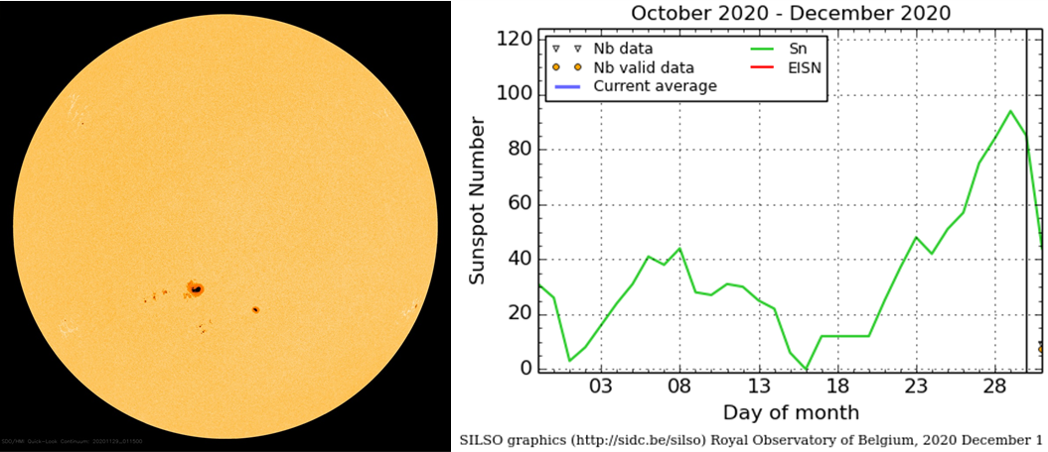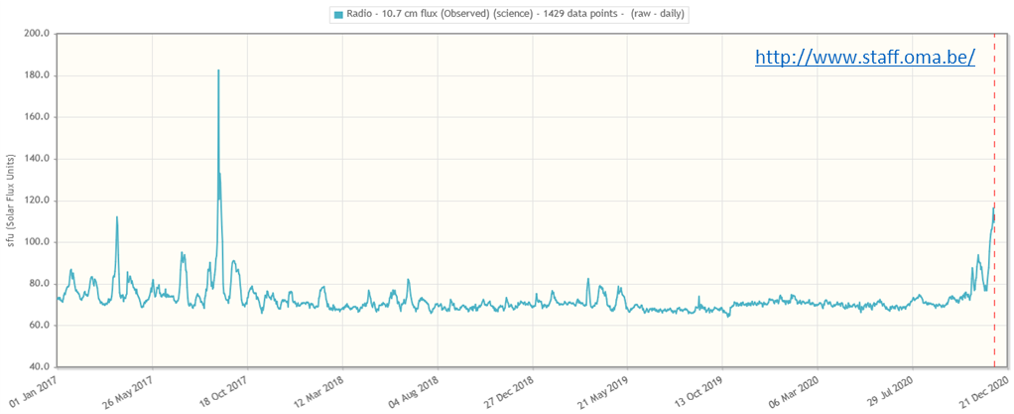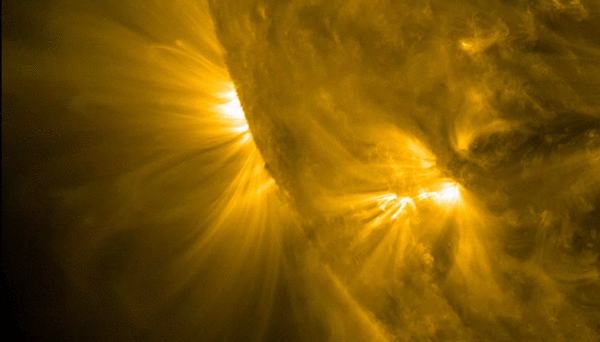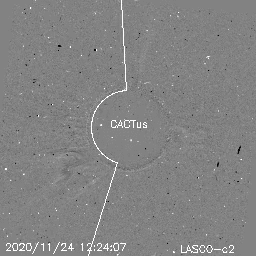Several sunspot groups were visible last week, with on 29 November no less than 6 groups at the same time. This drove the International Sunspot Number (ISN) to levels near 100, a value not seen since the last episode of major solar activity back in September 2017 (See the STCE Newsitems here and here). The main sunspot group was NOAA 2786, of which the largest spot was reported visible to the naked eye by several solar observers (using eclipse glasses of course!). On top of that, according to the daily USAF/NOAA Solar Region Summaries (SRS), NOAA 2786 was also the first group of solar cycle 25 (SC25) to reach an area of 1000 MH. This is again a value not seen for a single sunspot region since the big groups from September 2017 (NOAA 2673 on 9 September, 1060 MH). Note that 1000 MH ("millionths of a solar hemisphere") correspond to about 3000 million square kilometers, or roughly 6 times the entire surface of the Earth.

The presence of so many sunspots also drove the observed 10.7cm solar radio flux above the 100 sfu (solar flux units, with 1 sfu = 10-22 W m-2 Hz-1) level, for the first time this solar cycle. It reached a maximum value of 116.3 sfu on 29 November, the same day the (preliminary) ISN reached its maximum value of 94. These are again values not seen in more than 3 years.

Despite their size, these regions had relatively simple magnetic configurations and produced only C-class flares. Yet, on 29 November a strong long duration M4.4 flare was produced by a region that was still behind the southeast limb on 29 November. Despite its location, post-flare coronal loops quickly towered 65.000 km above the solar limb, as can be seen SDO/AIA 171 extreme ultraviolet imagery underneath. The associated coronal mass ejection (CME) was the fastest so far this solar cycle, with a speed of around 1250 km/s. As such, it belonged to the O-class ("occasional") on the SCORE-scale for CME speeds (see this NASA website). This CME is thought to be mostly directed away from the Earth in view of its farside location.

Also the first halo CME of SC25 was observed last week. On 24 November, an asymmetric halo was recorded around the Sun in coronagraphic imagery by the SOHO/LASCO instrument, as can be seen in the CACTus difference imagery underneath ("difference" means one image subtracted from the previous one). The all-in-all faint CME originated from a source on the farside of the Sun ans so it was not directed to Earth. The halo is labeled "asymmetric" because the Sun is not nicely in the centre of the halo, but a bit to the right. This means that the source region of the CME was not exactly on the Earth-Sun line, but slightly to the east ("left") of this line.






